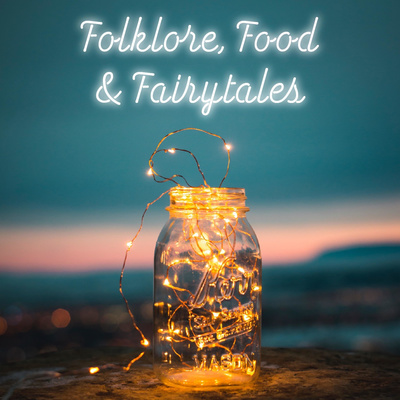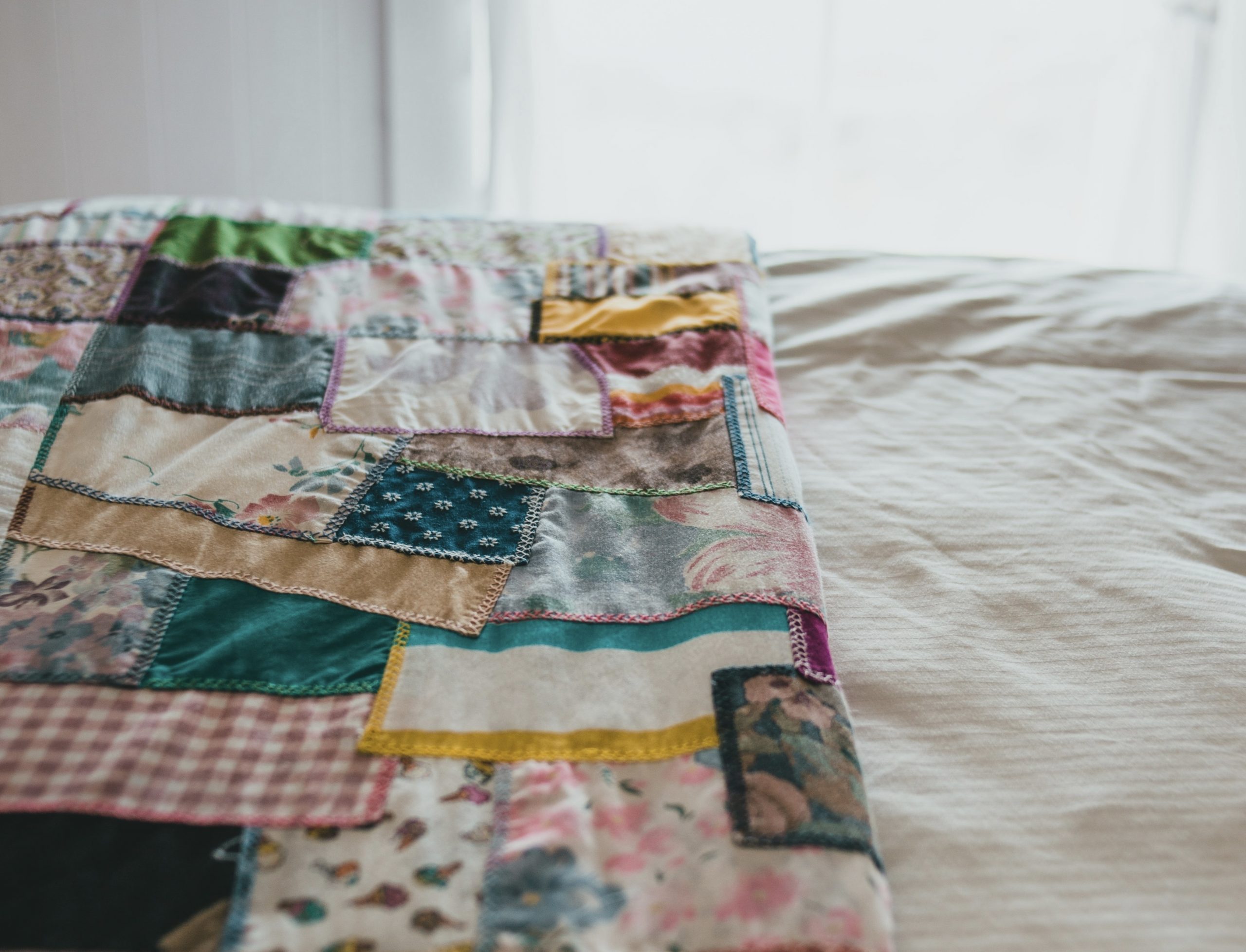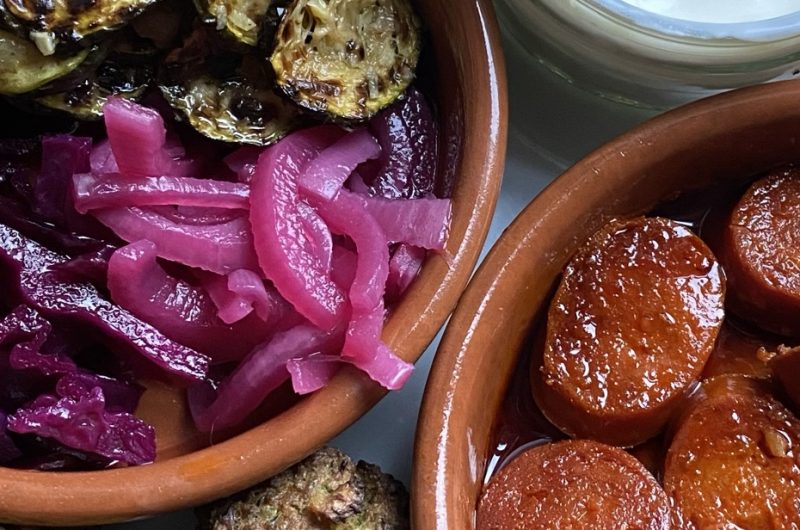In which we discover the connection between unmanageable women, good strong vinegar and the importance of good manners. We also learn that happiness can be found anywhere but chances are improved if there is a rocking chair, a fire and a cat.
In which we discover the connection between unmanageable women, good strong vinegar and the importance of good manners. We also learn that happiness can be found anywhere but chances are improved if there is a rocking chair, a fire and a cat.
The Tale: The Old Woman Who Lived in a Vinegar Bottle adapated from various versions including Katharine Briggs and Rumer Gooden
The Recipe: Instant Pink Pickled Onions
You can subscribe (or just read) my free newsletter for further snippets of folklore, history, stories, vintage recipes, herblore & the occasional cocktail.
You can also find out more at Hestia’s Kitchen which has all past episodes and the connected recipes on the blog. If you’d like to get in touch about the podcast you can find me on Twitter or Instagram at @FairyTalesFood. If you fancy signing up to my newsletter then you can read my first one and see if you like it.

So what did you think of the tale. I really enjoyed adapting this story, I loved this story growing up but I always felt that it was unfair that the woman lost everything. I know she was greedy but she had had so little in her life that you can completely see how she just kept reaching for bigger and better things. I hadn’t read Rumer Godden’s version of the story until fairly recently and I love it so I borrowed some elements and brought them into my adaption. Rumer’s telling of the tale shows the old woman as a person and not just a morality tale and I wanted to take that further. She said that she was told this tale as a young girl and that her mother was also told it by her nurse in the same way. So guessing, based on when she was born, the tale was being told from the mid to late 19th century at least. Rumer says she just added the cat. I may have added my own.
Practical Magic
One of the reasons I love this tale is that the more I consider it, I think I would only ever dream aloud about my perfect house once and be satisfied for ever if it turned up. It’s possible that the reason I would be more than satisfied is because my dream house is a slight variation on the house in the film Practical Magic (I have added a library, a secret staircase, better wallpaper, plus relocated it to the UK in case you were wondering).
Less Vinegar, More Fish
I digress, back to our story, this tale is tale type ATU 555 or The Fisherman and his Wife and the eponymous tale appears in the Grimm collections from 1812 but there are also variants from all over the world including France Mexico, Japan, Cameroon and Russia. The tales are different to our British one in three very specific areas, firstly they don’t all live in a vinegar bottle, usually in broken down huts. Secondly, their wishes are granted by a fish that is saved by the male character not on a whim by a fairy. Thirdly, the desire to constantly improve social status and riches is usually driven by the greed of the wife of the protagonist who is punished by removal of the riches as he should have told her no when she kept requesting more and more from the little fish.
There’s A Moral in This
Often fairy tales and folk tales have a clear moral element but this one doesn’t need anyone to draw a picture to assist with its meaning. It may as well say you should be happy with what you have and if you can’t be then you will punished for your greed. It’s clearly one that’s meant to keep the poor in their place and discouraging them to aspiring to the lives of their betters with a side order of: men should be in control of their households.or look what can happen . My adaption of the story is perhaps a little less on the side of capitalism and more on the side of money doesn’t always bring you happiness and as we discussed before there is no man in the British folk tale.
The other element in our tale which is particular to the British variant is the fairy rather than a fish. There doesn’t seem to be any reason for this rather dramatic change unless its just that British audiences preferred their supernatural in a form they could easily understand. There is a fairly good English tradition of storytelling which features mischievous fairies answering wishes just to watch the chaos ensue so maybe there is an element of that here. There are also tales of fairies granting wishes to people who are wasteful of them which leave the people in exactly the same position as when they started but sometimes with an extra sausage so maybe I was channelling a bit of that myself.
Gratitude and the Fae
The fairy element combined with lack of gratitude is also interesting. Lots of recent fiction which contains fairies or the fae has them resenting gratitude for gifts or help as it implies a debt is now owed fairies hate to be in the debt of anyone particularly humans. I struggled to find evidence from storytellers or folklorists noting this phenomenon or perhaps I was just looking in the wrong books. The only thing I could find was from Katharine Brigg’s fairy encyclopaedia where she notes it under Good Manners – ‘certain fairies do not like to be thanked’. Yallery Brown comes to mind.
Anyway our fairy in this tale seems to be fairly miffed that the old woman stops being grateful and saying thank you. She seems to suggest its not just the increasing demands but the lack of gratitude that makes everything worse.
Hippocrates Again
Anyway lets move on from our fairy folklore and onto our ingredient today. I won’t make you guess, it’s vinegar from the house that wasn’t really a vinegar bottle. It has a long history and some interesting folklore of it’s own so we’ll move along through. Vinegar has been around since the 5th Century BCE which is impressive in itself. Its probably even older than that but its just that Hippocrates makes the first known reference as Alan Davison says in the Oxford Companion to Food:
“Vinegar has been in use for thousands of years and its origins are untraceable. One of the earliest references is from the 5th century BC, where Hippocrates recommended its medicinal powers. However, then as now, its main use has been as a flavouring and preserving agent. There was no need to invent vinegar as it makes itself without difficulties.”
An essential ingredient for food preservation and flavour, it was also used as a drink. All those children who were laughed at for drinking vinegar, you were actually repeating the behaviour of Roman legionaries who drank it added to water as it was stronger flavoured than wine so you didn’t have to carry so much. Very refreshing apparently . It was used in medicine as the acid content would help leach oils from herbs and dissolve seeds. Its the base for the most famous plague cure: Four Thieves Vinegar.
The OG Black Death
The story (one of several) is that during the Black Death (the original 14th Century one) a group of thieves from Marseilles who previously had worked as spice merchants were robbing the dead or the sick. When they were caught, they offered to exchange their secret recipe, which had allowed them to commit the robberies without catching the disease, in exchange for leniency. This vinegar always contained rosemary as well as other herbs. In some versions the thieves were still hanged instead of being burned to death. In others they were allowed to go free. We don’t really know if this happened but even if it didn’t its still an interesting story. The story survives possibly because herbs and vinegar go together like, well strawberries and cream even if that combination is a little bit stomach curdling.
Strawberries & Vinegar
I have had strawberries with vinegar though, drops of expensive balsamic vinegar really bring out the flavour of the fruits and they were scattered with basil which brought its own glorious aromatics to the party. Enough remembrances of excellent puddings past, we should stick to vinegar which Balsamic Vinegar isn’t strictly speaking as it is made from grape must and not wine. Its the good stuff that isn’t strictly speaking vinegar though. If you paid less than a fiver from Aldi for yours, like most of us, there is enough actual wine vinegar added to make it definitely classify.
Did you know that the reason we all get to enjoy balsamic vinegar now is actually the French Revolution? Essentially Balsamic vinegar was only made for and by noble families in Modena and Reggio Emilia in Italy. It was an asset but was never sold, only given as gifts between said noble families. It was a wonderful condiment, however when The Revolution arrived with the bayonets of Napoleon’s troops when he invaded Modena in 1796.
When the troops arrived, the Duke D’ Este, Ercole III, fled to Venice leaving some very expensive barrels of balsamic behind him. The French troops had as much respect for palaces as previous experience would suggest, so it was stripped of all assets and sold. The casks of vinegar from the ducal cellar were no exception and they were a huge hit with everyone who tried it. Once the secret of this wonderful product was out of the bottle, like a genie, it couldn’t be easily pushed back in so the market for balsamic vinegar (named for its restorative or balsam like qualities) had begun.
Vinegar – A Definition
I realise I haven’t really explained what the definition of vinegar actually is, its a mixture of water and acetic acid. Acetic acid is usually produced by double fermentation first of the sugars in a liquid, by yeast to ethanol and then by acetic acid bacteria from ethanol to acetic acid. Humans usually create the first fermentation and then nature does the rest. The flavour and look of the vinegar come from its original liquid. Wine vinegar from wine, malt vinegar from ale and cider vinegar from cider etc. Malt vinegar is popular in the UK, wine vinegar throughout the rest of Europe and strangely cider vinegar in the US.
The US has an interesting relationship with vinegar and it is possible that they were looking to recreate verjus which was an acidic ingredient made from crab apples in the British Isles from at least the Middle Ages. Vinegar companies were also the only ones that were allowed to buy alcohol commercially during prohibition and you can imagine that inspired certain elements of the criminal fraternity to suddenly become interested in vinegar manufacture. However the authorities eventually realised that the popularity of vinegar manufacture was for nefarious reasons and introduced the additive of 5% ethyl acetate which was fine for brewing vinegar but sadly not for booze.
Good Wine: Good Vinegar
Vinegar in France however was very definitely wine vinegar, made in the traditional home of French wine vinegar Orleans. Vinegar making was started in Orleans while France was still Gaul and the Roman legionaries were known for drinking vinegar with water. It was an important centre for wine transport on the Loire, soon became the vinegar capital due to spoiled wine being dropped there when it didn’t pass inspection for onward transport to Paris, and half of French wine vinegar is still produced there.
The famous Orleans method was named after this locality and is the most famous slow method of vinegar production: barrels are filled with wine and vinegar and fermentation is carried out slowly by the acetic acid bacteria, which will generally metabolise all the alcohol in a 9 % ethanol wine in 1 to 3 months. The vinegar merchants’ corporation was created in this city in 1394, and in 1580 Henri IV ordered that the profession of vinegar and mustard merchant should be a recognised occupation in the town and its suburbs.
From Folk Medicine to Apple Blossom
Enough of history, what about the folklore, you may ask. Firstly as I’ve mentioned vinegar had an important part to play both in extracting compounds from tougher herbs and for hiding the flavour of some very foul tasting mixtures. It even appears in the form of vinegar and brown paper cure for headaches in the nursery rhyme Jack and Jill.
However there are some more metaphysical superstitions. It was said in Germany that when a person died, all the wine in their cellar had to be shaken to stop it turning to vinegar caused by any ill wishing from from the death. Another German superstition says that all vinegar must be taken out of the house if someone is likely to die as it can trap the soul. Vinegar was also thought to be able to drown evil spirits. There are also tales of witches in Malaysian folklore who become extremely disturbing creatures after meditating in a bath of vinegar. The smell of vinegar is what gives her away when she returns to her normal body.
It was also believed that if you were angry when preparing or working with vinegar or became enraged then the vinegar would be stronger. Also if you need to shake the vinegar barrel then you should do it at full moon. I have no idea why but I suppose this isn’t actually bad advice, if you’ve got to shake it a some point then presumably a full moon would do as well as any other time. A sycamore twig added to vinegar would apparently also make it strong, again no idea why although I do know that sycamore would keep fairies away from your dairy so why not make vinegar stronger. Also apparently pregnant women should not tap vinegar or the barrel will go cloudy.
My favourite is ‘write the name of three shrews on a piece of paper and then put it into the vinegar barrel and you will have good strong vinegar’. I am assuming that shrews here means unmanageable women as most people probably wouldn’t know the name of three woodland animals. Especially when another superstition suggests that the vinegar will be good and strong if three women blow into the barrel. However, in some places it Is believed that if vinegar is disturbed whilst the apple trees are in bloom, it will turn back into cider (assuming that it is cider vinegar that is).
Bring on the Acid
I think there many more but I’m pretty sure that’s enough to be going on with. I’m just going to have a quick look at vinegar in food. If you haven’t read the amazing book Salt, Fat, Acid, Heat by Samin Nosrat, I recommend it heartily. She says
“recipes lead us to believe that cooking is a linear process, while most good food results from a circular one; like a spiderweb, touch one part and the entire thing will quiver.”
Samin Nosrat, Salt, Fat, Acid, Heat: Mastering the Elements of Good Cooking
I learned so much from Samin how to use acid to brighten and balance flavours that are part of that spider web. Vinegar is the easiest acid for cooking as it is a store cupboard ingredient. Much as we’d like to the have them always around, the perfect lemon may have been used yesterday in that lovely gin and tonic. You can also create you own flavoured vinegars to dress foods and use in marinades. I use it lots when dressing roasted veg that are just that little bit too sweet or for making kale salad or making. The possibilities are endless.
Recipe Time
The recipe I’m going to bring to you is perfect with so many things, looks gorgeous and is extremely simple. I can’t remember where I learned the technique (almost certainly a book but might not have been). I bring you perfect instant pink pickled onions (well nearly instant, under 1 hour is pretty good for pickles)
Instant Pink Pickled Onions
4
servings30
minutes40
minutesAmazing with pretty much anything but particularly great with falafel and halloumi wraps, tacos or lamb kebabs.
Ingredients
1 biggish Red Onion
Enough vinegar to cover in a jar
Directions
- Firstly take biggish red onion and slice it finely, separate it all out and add it to a colander or sieve that can handle boiling water.
- Then boil a kettle, whilst its pouring dig out a jar with a non reactive lid that looks like it could hold all the onion.
- When you have boiling water, hold the sieve/colander over the sink and pour over the onions, keep going until all the water is gone, allow water to drain off, then squish the onions into the jar, carefully as they’ll be very hot.
- Then top up with white, white-wine or cider vinegar and pop on the lid and allow to cool. They will be a gorgeous bright pink and just crunchy enough without any rawness.
Featured image:
Photo by Erik Mclean on Unsplash


